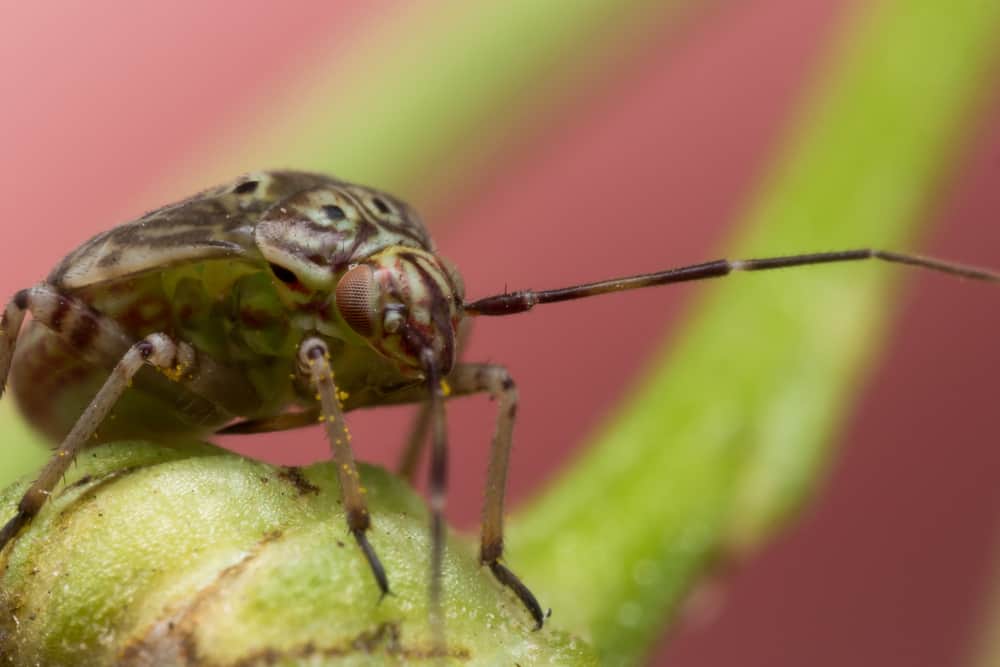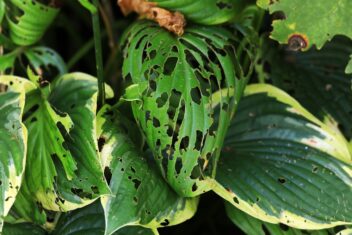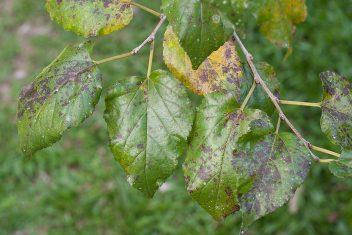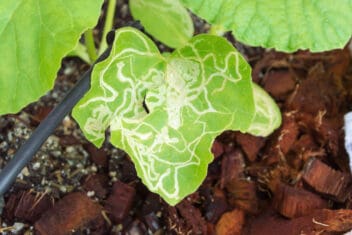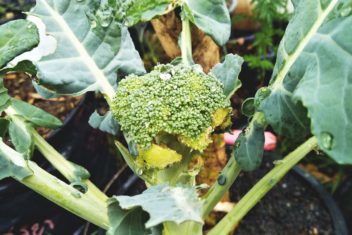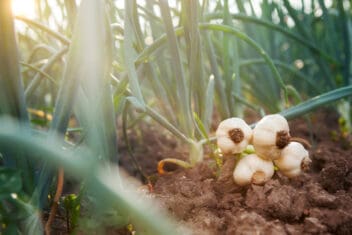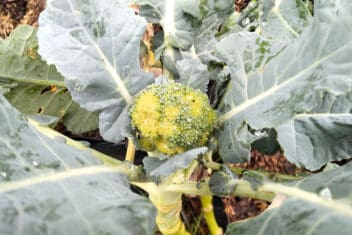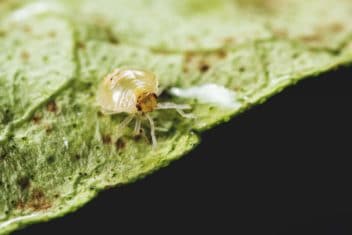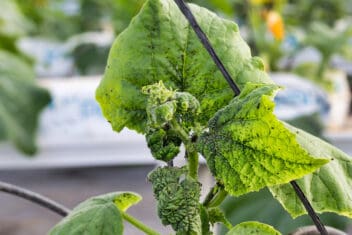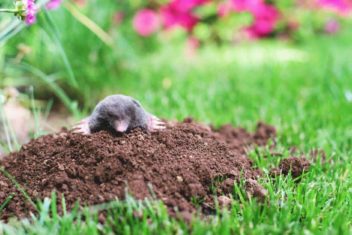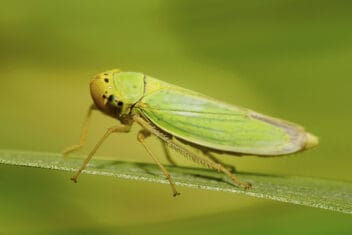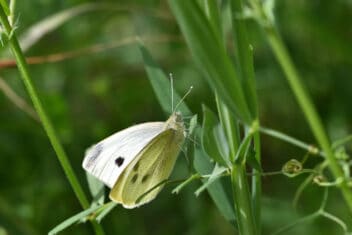One of North America’s most destructive garden pests is the tarnished plant bug. This small, plant-feeding insect is destructive primarily because it can feed from a huge variety of plants.
Tarnished plant bugs can feed on over half the crops grown commercially in the United States, as well as various weeds and wild plants. This omnivorous aptitude makes it impossible to starve out the tarnished bug. It will simply switch to eating another plant instead.
When the tarnished plant bug invades, almost all the plants in our gardens are at risk. But knowing how to recognize this pest early on can make controlling its damage easier and more effective.
Getting to Know the Pest
Tarnished plant bugs (Lygus lineolaris) love feeding on young plants, buds, flowers, and new fruits. They feed by inserting their long, sucking mouthparts into the plant and then flushing the area with their saliva.
Just as mosquitoes inject a bit of itchy poison into each bite to keep the blood from coagulating, the tarnished bug injects a bit of the toxin polygalacturonase into each wound it makes in the plant. Polygalacturonase breaks down the pectin and the tissues in the plant, making it easier for the bug to digest.
This toxin creates telltale damage signs at the feeding sight.
Browning, scarring, and deformation of the young fruits and flowers are easy-to-see signs that tarnished plant bugs are running amuck in your garden.
Of course, these telltale signs only appear because polygalacturonase is killing the plant cells all around the injection site – which means the damage done to the fruit, flower, or plant is long-term.
Recognizing Tarnished Plant Bugs
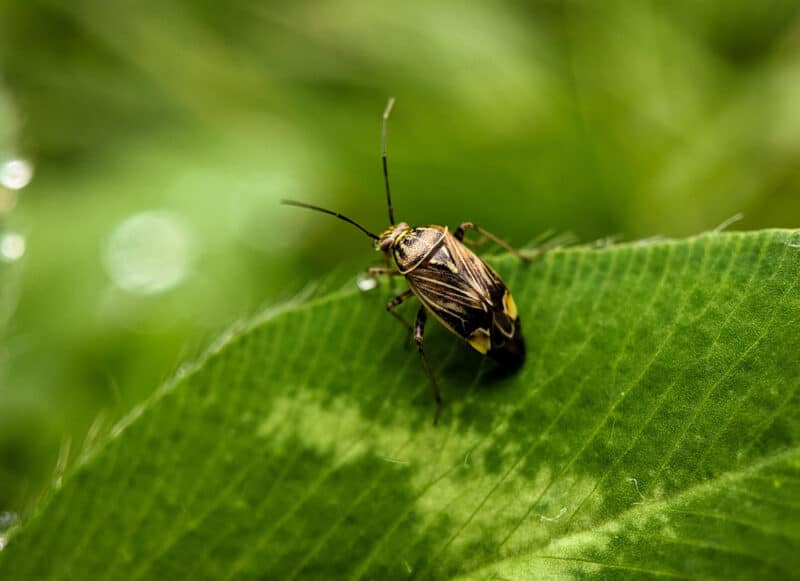
Tarnished Plant Bugs are named for their ‘tarnished’ coloring. Their brown bodies with orange, red, and yellow accents look like tarnished silverware. These bugs have a distinctive, light-colored “V” on their backs.
Adult tarnished plant bugs are flat, small, flying insects. They’re about a quarter of an inch long with long, sucking mouthparts. Adult tarnished bugs lay cream-colored eggs. The eggs are light and curved, with one flat end.
About a week after laying, the nymphs hatch. The nymphs follow five stages of development before entering the adult stage.
It can be hard to tell nymphal tarnished bugs from aphids in those early stages. The young nymphs are tiny, pale green, and soft-bodied.
Nymphal tarnished bugs are faster than aphids though. They also lack the cornicles that all aphids have on their bodies. But, since both pests are so small, it’s hard to examine protrusions up-close.
Life Cycle

Tarnished plant bugs can have 2-3 generations each year. In colder climates, they’re limited to 2, while warmer areas usually have to deal with three different generations of tarnished plant bugs.
Each spring, the cycle starts with overwintered adults laying eggs early in the season. About 5-7 days later, the eggs hatch and hungry young nymphs are ready to start feeding.
The nymphs are even more destructive and voracious than their adult counterparts. They may develop fully in less than two weeks, or it may take over a month for nymphs to grow into adulthood.
The speed of development depends primarily on environmental conditions. Temperatures, humidity, and daylight hours all contribute to the development speed.
Once they reach maturity, adult tarnished bugs mate, and the females begin laying eggs. Tarnished plant bugs can lay quite an abundance of eggs in a short lifetime. Around 90-100 eggs is common.
So for each adult female tarnished plant bug in your garden, you could be looking at another generation of 100 voracious young nymphs.
When winter comes around, the adults overwinter in garden debris like leaves, dead weeds, old wood, and bark. They especially love dormant mullein, clover, and alfalfa plants. Then, in early spring, the old adults can lay eggs in these ideal host plants.
What Plants Do Tarnished Plant Bugs Eat?
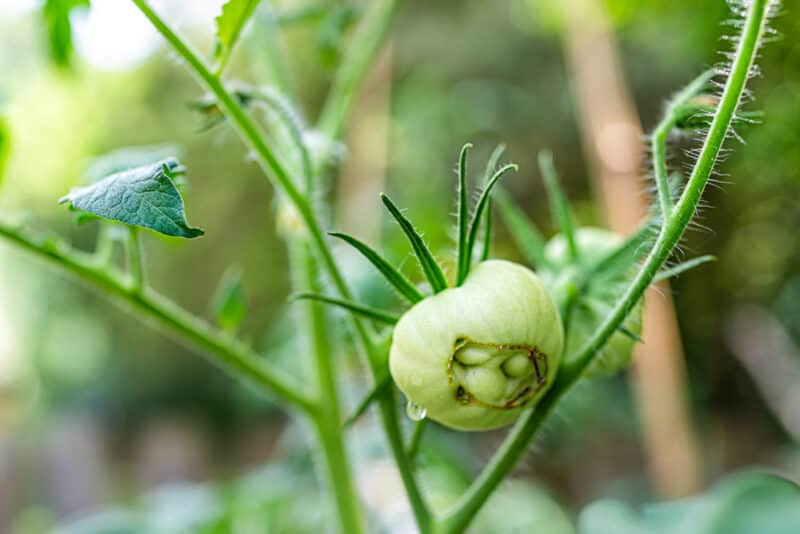
With over 700 species of plants on the menu, it seems tarnished plant bugs eat almost anything and everything. Of that 700, about 130 are plants that we commonly grow on a large scale. Some notable species are cotton, clover, potatoes, strawberries, apples, and pines.
When they feed, tarnished bugs can cause catfacing on tomatoes and cloudy spots on tree fruits like apples and plums. Lettuce leaves turn yellow and brown, while strawberries and pears are often smaller with shrunken spots on the fruit.
Even individual tarnished bugs don’t mind switching from host plant to host plant. They can fly easily and can move around in a large area better than many other pest bugs.
With their easy ability to fly and their varied, generalized diet, tarnished plant bugs can go where they need to to find food or escape pesticides. This makes controlling them difficult.
Controlling Tarnished Plant Bugs
You can prevent tarnished bugs from moving onto a crop by covering the plants with spun poly floating row covers. Flying tarnished bugs can’t get through the row covers to attack the plant, so they’ll move on to unprotected plants.
White, sticky traps are also a great way to control tarnished plant bugs. The traps attract tarnished bugs and then hold them in sticky coating. Place the traps about two feet off the ground for maximum effectiveness.
Environmental Controls
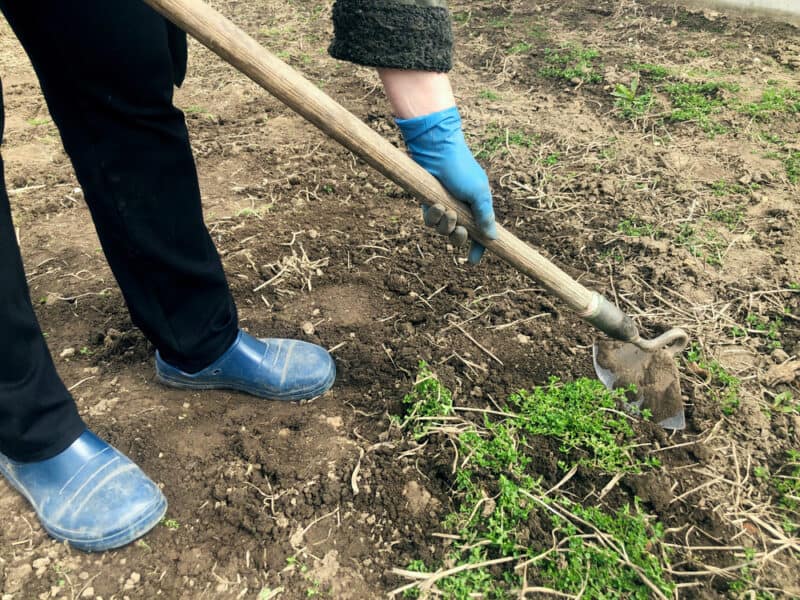
Creating an unwelcoming environment for tarnished bugs is one of the best ways to reduce their impact on your garden. Start by weeding your garden well. Like many other pests, tarnished bugs overwinter in garden debris and weedy areas.
They can also thrive on many weeds, making every unpulled weed a possible food source for hoards of tarnished bugs. Clean up that garden!
Rake away rotting wood and decomposing leaves, pull weeds, and open the yard. Essentially, remove all the hiding places and possible host plants so that tarnished bugs don’t feel safe or welcome in your garden.
Dandelions, lamb’s quarters, mullein, chickweed, and curly dock are especially attractive to tarnished plant bugs. Keep these plants out of the garden.
You can also plant pollen-heavy plants around the outside of the garden to attract bugs that prey on tarnished plant bugs. Both damsel bugs and pirate bugs eat tarnished plant bugs, so lure them in with the pollen-producing plants they love.
Garlic Spray
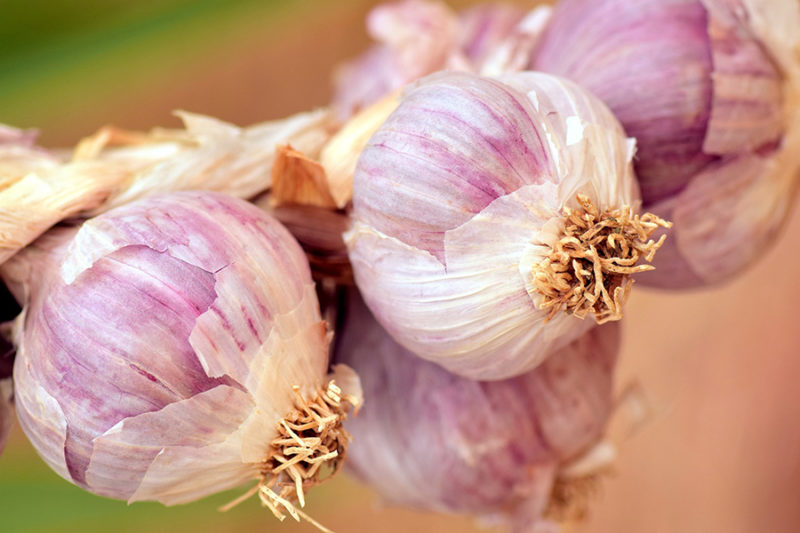
Garlic spray is often used as a deterrent to tarnished plant bugs. It appears to make the sprayed plants much less attractive to the bugs, both as food and as plants to lay eggs on.
That said, there haven’t been any studies to confirm its efficacy. But since garlic is cheap and an oil spray made out of the juice is easy to make, why not try?
While young plants are growing, you can spray them regularly with a garlic spray to deter tarnished bugs.
Of course, as the plants get close to harvest time, you’ll need to avoid this spray. Fortunately, since tarnished bugs prefer young fruit and blossoms, you won’t need as much control later in the season.
Kaolin Spray

You can also spray young plants with a product that contains kaolin clay to coat them lightly. This creates a small, breathable barrier between the bugs and the plants. Plants coated with kaolin aren’t able to host tarnished bug eggs or provide a satisfying food source.
As the University of Wisconsin-Madison reports, kaolin clay sprays are effective against tarnished plant bugs, plus they’re organic.
Sabadilla
This highly toxic plant is native to South and Central America. It’s becoming popular as an insecticide for organic growers. You can dust young plants with sabadilla early in the morning to kill tarnished plant bugs as they eat throughout the day. Once again, don’t use sabadilla later in the season before harvesting.
If you have a problem with tarnished plant bugs, sabadilla is one of the few organic pesticides to which tarnished bugs aren’t resistant. But, if you have a heavy infestation of tarnished plant bugs, even sabadilla is unlikely to have much effect.
Insecticidal Soap

When the young tarnished plant nymphs are devouring the plants in your garden, they’re also the most vulnerable to sprays. Tarnished plant bug nymphs don’t just look like aphids; they’re also soft-bodied like aphids.
In this stage of life, they’re soft enough to be controlled with regular applications of insecticidal soap.
Apply insecticidal soap twice a month to kill vulnerable young bugs during the young nymph stages. Add neem oil to your insecticidal soap applications.
Insecticidal soap does not work on adults.
Neem Oil
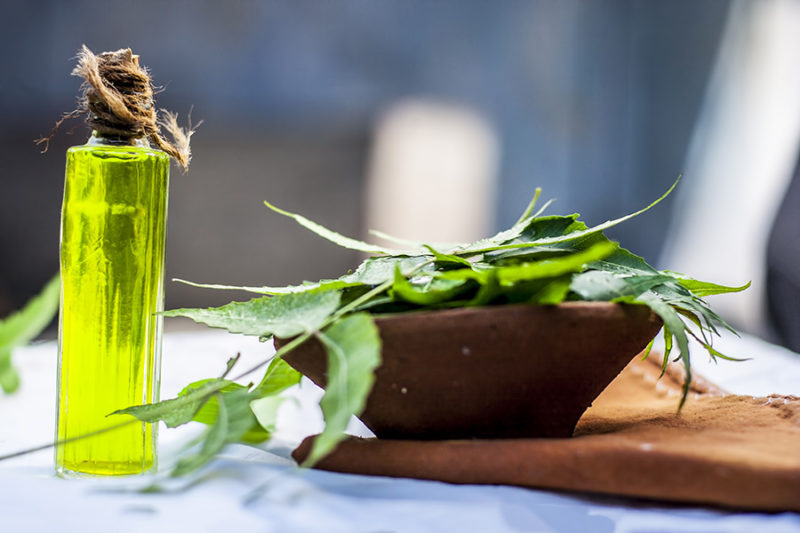
Tarnished plant bugs are vulnerable to neem oil, and the double-punch of insecticidal soap and neem oil can do wonders to reduce your pest population.
While tarnished plant bugs are resistant to most insecticides, neem oil is effective in almost all stages of life. In adults, neem oil reduces the bugs’ abilities to procreate successfully. In all nymph stages, neem oil is incredibly effective.
Neem oil damages the development of the nymphs. They lose the desire to eat, and they begin to develop abnormally.
Neem oil insecticidal soap will kill the nymphs on contact, and then continue to repel them for over a week. Bugs that come into contact with sprayed leaves and survive with develop abnormally and usually fail to reproduce.
